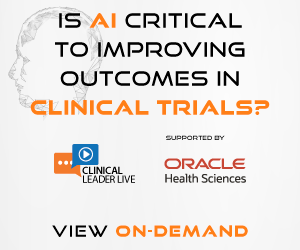Can Virtual Trials Maintain Their Momentum After COVID?
A conversation with Monica Chmielewski and Kyle Faget, Foley & Lardner LLP, and Laurie Halloran, Halloran Consulting Group

Prior to COVID-19, there were many discussions about how it might be possible to conduct clinical trials in a virtual setting, using technology and innovative measures. While that technology was arguably available long before COVID-19, it really had not been embraced or utilized in a widespread manner. Now that has all changed. COVID-19 has forced this issue to the forefront, and even the FDA is focused on advancing virtual trials. In March, the agency urged sponsors and CROs to adopt a virtual approach to the conduct of clinical trials, in an attempt to slow the spread of the disease.
What will it take for the industry to fully implement a virtual approach to the conduct of clinical trials? What technological, logistical, and regulatory hurdles remain. In this Q&A, Kyle Faget (of counsel) and Monica Chmielewski (partner) of the Health Care Practice Group at Foley & Lardner, and Laurie Halloran, CEO and president of Halloran Consulting Group, answer these and other questions related to virtual technology implementation in clinical research.
Prior to COVID-19, industry exhibited a real reluctance to adopt telemedicine or implement virtual clinical trials. Have you seen shifts in this thinking?
 Laurie Halloran: What I have started to see is a mindset shift in the use of telemedicine, which will ultimately impact clinical trials if companies embrace the shift. In March, people needed to break out and find work-arounds. How this goes forward will be related to the level of risk that the company is willing to assume. At the height of the shutdown, the risk of not using technology was bigger than the risk of employing it. That’s the most significant shift. The industry as a whole is very risk-averse, but given the absolute standstill in the spring, companies were forced to change their approach. They started employing telemedicine visits and remote laboratory assessments, where the patient went to a lab for not in the same physical space as an academic medical center, or they had a visiting nurse come in and do protocol assessments. A lot of what goes into a clinical trial turns out to not actually require the doctor and patient to be in the same room.
Laurie Halloran: What I have started to see is a mindset shift in the use of telemedicine, which will ultimately impact clinical trials if companies embrace the shift. In March, people needed to break out and find work-arounds. How this goes forward will be related to the level of risk that the company is willing to assume. At the height of the shutdown, the risk of not using technology was bigger than the risk of employing it. That’s the most significant shift. The industry as a whole is very risk-averse, but given the absolute standstill in the spring, companies were forced to change their approach. They started employing telemedicine visits and remote laboratory assessments, where the patient went to a lab for not in the same physical space as an academic medical center, or they had a visiting nurse come in and do protocol assessments. A lot of what goes into a clinical trial turns out to not actually require the doctor and patient to be in the same room.
Here's a really simple example that illustrates the challenge we have created for ourselves. There's something called a six-minute walk test, and for years we have been asking patients to travel hundreds or even thousands of miles so that someone who is “qualified” can watch them walk for six minutes across a straight line, 20 meters, and assesses their physical improvement. It's not an objective assessment — it's subjective. But we've mandated the procedure as described, in person, without actually really knowing why. Now, people are starting to think more creatively about how they can conduct the test remotely. A lot of creativity was deployed because the pandemic-related shutdown created the necessity.
In many outpatient settings, a large proportion of assessments can be performed remotely. We also saw people define what critical safety or efficacy measures could be done without having face-to-face contact. Technically, any procedure that isn't a critical safety or efficacy measure really shouldn't be part of the protocol. Protocols are often over-engineered to collect data that no one actually knows what to do with — they just might want to have it someday. So, during the height of the shutdown, there was a very strong narrowing of focus onto what was absolutely necessary, and although study procedures were streamlined out of necessity, hopefully an important lesson was learned.
What are some of the regulatory and compliance implications that go along with these changes?
Halloran: Ultimately the challenge will be to ensure that the data that was defined as critical to demonstrate safety and effectiveness has been collected. If you've cut out so many procedures and tests, or the patients have skipped visits, that could ultimately impact your ability to determine whether or not the study met its endpoints. So, that's the highest risk for the company.
 Kyle Faget: I think it’s critical for sponsors to understand that a successful decentralized trial does not mean omitting important procedures or tests from the protocol. There are several hybrid approaches to clinical trials that can be employed up to and including sending nurses to subjects’ homes or having testing completed at local testing facilities, e.g. for blood draws. As far as data collection is concerned, one of the issues we have seen or heard from clients is that many sponsors are relying on their own tracking platforms to collect data instead of using commercially available HIPAA-compliant platforms.
Kyle Faget: I think it’s critical for sponsors to understand that a successful decentralized trial does not mean omitting important procedures or tests from the protocol. There are several hybrid approaches to clinical trials that can be employed up to and including sending nurses to subjects’ homes or having testing completed at local testing facilities, e.g. for blood draws. As far as data collection is concerned, one of the issues we have seen or heard from clients is that many sponsors are relying on their own tracking platforms to collect data instead of using commercially available HIPAA-compliant platforms.
Has this forced push to virtual enabled and/or inspired the industry to use technology in ways we haven't seen before?
Halloran: If you watch all the industry panels, yes. But there’s a drastic divide between what’s being discussed and what’s actually in use. Before the pandemic, approximately 0.4 percent of trials were fully leveraging technology in a meaningful way in clinical research, and that's just astounding in this era. During the past five months, so much more could have been employed, but sponsors were too busy just getting through their days.
The pandemic didn’t allow immediate, widespread technology adoption, because it takes more than a matter of weeks to get a remote clinical trial up and running. A lot of remote, supportive, or virtual opportunities were tried as a stopgap, but forward-thinking companies are now implementing new technologies, as the inertia to adoption has now been overcome. The pandemic made people realize that they were caught very flat-footed and that they should be thinking about what they can do differently going forward.
 Monica Chmielewski: True. However, the rapid increase in telemedicine use, as a result of the multiple 1135 waivers and state emergency orders means that getting decentralized trials initiated is easier now than ever. For example, with licensure waivers in force in many states, a principal investigator or another healthcare provider that is a member of the clinical trial team need not necessarily be licensed in the states in which all subjects are located. Additionally, Medicare is now reimbursing for services provided to beneficiaries without respect to location, which is a huge opportunity for everyone serving that population, including clinical trial work. CMS and several states also have explicitly allowed for telephone-only visits for some types of care, which makes follow-up visits easier and decreases the risk of no-shows, which is a huge problem for clinical trials.
Monica Chmielewski: True. However, the rapid increase in telemedicine use, as a result of the multiple 1135 waivers and state emergency orders means that getting decentralized trials initiated is easier now than ever. For example, with licensure waivers in force in many states, a principal investigator or another healthcare provider that is a member of the clinical trial team need not necessarily be licensed in the states in which all subjects are located. Additionally, Medicare is now reimbursing for services provided to beneficiaries without respect to location, which is a huge opportunity for everyone serving that population, including clinical trial work. CMS and several states also have explicitly allowed for telephone-only visits for some types of care, which makes follow-up visits easier and decreases the risk of no-shows, which is a huge problem for clinical trials.
How do you anticipate the implementation of technology will evolve in the industry?
Halloran: There are hundreds of different tools, enablers, and technology-oriented solutions that are supposed to facilitate how we get clinical trials done. What we see happening is a bit of a tsunami effect, where there are what seems like 15 different possible vendors for every single activity or step that goes into running a clinical trial. Where I see the disconnect is that users ultimately require one unified stream, where data is generated based on one-touch entry or one-touch dictation, and then is managed through the entire process until it is visualized as part of final data set.
That's the opportunity, but we're not there quite yet. A few sponsor companies are on the leading edge of that trend, and we're studying what those companies are doing right now so that we can define how technology vendors need to work together to create a digital strategy to integrate and move data seamlessly from its origin to an integrated clinical data set. That's where I see the value of what we are doing — to define that strategy and then to bring the vendors together to implement it.
Chmielewski: The use of certain technology would allow industry to expansion to reach even more potential subjects, and to allow people who might otherwise not have access to a clinical trial to participate as well. Not having to travel thousands of miles to do the walk-the-line test would open up access, too.
Faget: It would seem to me that the use of technology, particularly in the ultra-rare space, would be a really good thing. I can't imagine why anyone in that space wouldn't want to move to a technology-based model because all of a sudden you can reach — via technology — patients who have a huge barrier to travel or otherwise couldn’t get to the clinic. So I think that virtual trials, can be one solution.
During the pandemic, a lot of the barriers to entry for telemedicine, which by extension is used in clinical trials, crumbled down and opened a pathway. If the laws and regulations that limited technology adoption remain at bay after the pandemic, there could be a real opportunity for sponsors to utilize telemedicine in a compliant way.
About The Participants:
Kyle Faget, Of Counsel, in Foley & Lardner, LLP’s Boston office is a member of the firm’s Health Care Practice Group and of the Life Sciences Industry Team, where she focuses her practice on regulatory compliance, research, clinical development, and commercialization of pharmaceutical and medical devices and on telemedicine.
Monica Chmielewski is a partner in Foley & Lardner, LLP’s Chicago office. She is a member of the firm’s Health Care Practice Group and co-chair of the Life Sciences Industry Team. She represents pharmaceutical, biopharmaceutical, and medical device companies, as well as hospitals and health systems, in all areas related to clinical research and the FDA.
Laurie Halloran founded the Halloran Consulting Group in 1998. Her time as a pediatric ICU nurse has inspired her to start a company that helps move new therapies through the FDA processes to get them into the hands of patients that are desperately in need. Halloran has been named 2018 Women’s Business Enterprise Star by the Women's Business Enterprise National Council (WBENC) and has won a 2017 Enterprising Women of the Year Award from e magazine.

